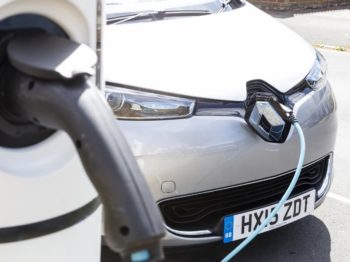The Department for Transport has published latest data on usage of public sector fast chargepoints, showing how vital workplace charging is to EV take-up.

The data presents experimental statistics on the usage of fast electric vehicle chargepoints part-funded by the Office for Low Emission Vehicles (OLEV). It uses data that must be supplied by public sector entities, including rail companies, that have received grants from the Local Authority Grant Fund (LAGF) as a condition of the grants.
The analysis – which comes as the Government also announces new smart technology requirements for home chargers – has been produced to help support and inform the strategy for ultra low emission vehicles in the UK and shows details on energy supplied, plug-in duration and time and day of plugging-in.
Explaining the results, Erik Fairbairn, CEO and Founder of Pod Point, said: “Looking at the usage data for these charge points and their locations, they appear to be largely what we would class as workplace charging, with a couple of exceptions including the chargepoints situated at train stations.
The easiest bit to analyse is the median average energy. This is 6.7kWh which matches very closely with the c8kWh average we see across the Pod Point network. What this really tells us is that people tend to drive about 21 miles a day, and tend to charge each day. It also shows that EV drivers top up – i.e. they don’t wait until their car is flat, they plug in wherever they park, and replace the energy they used for their last journey.
“The data on charge duration is less interesting as it is a measure of how long the vehicle was plugged in for, and does not give any information about how long the vehicle was charging (drawing energy). As such, this data shows the average dwell time – i.e. how long the drivers remained at that location, and is not how long they were charging – a subtle difference.
“It also tells us that in most cases the EVs were fully charged a while before the driver left the premises.
“The combination of these two patterns are very typically with what we see across workplace charging and strongly support the importance of workplace charging in enabling the mass adoption of electric vehicles.
“Indeed there is some strong data that in addition to being well liked by EV drivers, employees are six times more likely to charge their vehicles or switch to EVs if workplace charging is available. So the more employers that install workplace charging, the better in terms of encouraging EV uptake.”

